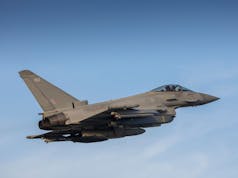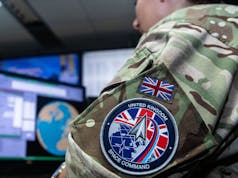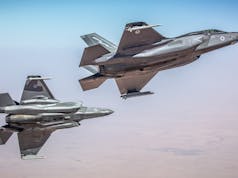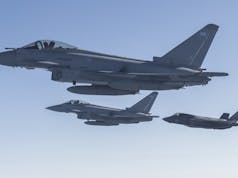A major NATO exercise in the Baltic region showcased the Alliance’s expanding air mobility and deterrence posture, as German-led forces conduct fast-paced multinational operations across four countries.
Exercise Griffin Lightning, which ran from 5 to 23 May 2025, is directed by NATO’s Joint Force Command Brunssum and features more than 800 personnel and over 30 helicopters from Germany’s newly formed Aviation Brigade.
Operating from a temporary airbase in Panevėžys, Lithuania, the brigade is conducting missions into Latvia, Estonia, and Poland to support NATO’s forward-deployed forces.
The brigade, which became operational on 1 January 2025, draws on both the German Army and Air Force to combine Tiger attack helicopters, NH90 and CH-53 transport helicopters, and aeromedical evacuation assets. Its integrated structure provides NATO with a flexible force of roughly 2,500 personnel capable of executing troop and equipment transport, casualty evacuation, and other mobility tasks in support of Allied operations.
According to NATO’s JFC Brunssum, “this deployment also displays NATO’s growing ability to coordinate joint operational effects across borders.” German helicopters are supporting NATO formations from a rapidly constructed forward base, reflecting NATO’s focus on operational agility and multinational cohesion.
The Aviation Brigade’s participation also supports NATO’s enhanced Forward Presence, particularly Germany’s long-standing leadership of the Battlegroup in Lithuania. Following Russia’s full-scale invasion of Ukraine in 2022, Berlin committed to stationing a permanent mechanised brigade in Lithuania. The addition of air assets further reinforces that pledge.
Exercise Griffin Lightning incorporates cyber, signals, and security components to ensure interoperability across domains and with partner forces. It is one of several large-scale NATO exercises taking place this year aimed at improving readiness and delivering a unified message of deterrence.
As NATO’s Joint Force Command put it, “Griffin Lightning strengthens Alliance cohesion, builds interoperability, and demonstrates the ability to project force rapidly and effectively across NATO territory. It sends a clear and unambiguous message: NATO remains united, prepared, and capable of defending every inch of Allied territory.”














Interesting.
I wonder how many cabs we could deploy out of the
50 Apache
50 Chinook
62(?) Wildcat
55(?) Merlin
@33.3% average availability, OK let’s not get onto the subject of the Merlin gearbox….., 217/3 =72 ish
The British army did deploy a similar force last year on exercise in Europe although seemingly not quite as large as this one. I don’t think I can post links here but if you search Youtube for this title: “British Army’s Apaches leave UK for largest Nato exercise since Cold War.” It’s on the BFBS Forces News Youtube channel.
The German army is doing some interesting things. As well as this new Aerial Mobility Brigade, they’ve created a new Territorial Defence Division, that’s basically a big reserve of light role troops in rear echlon security and civil resilience roles. 10th Panzer’s warfighting orbat is looking like a bit of a monster, with 5 brigades (12th Panzer, 37th Panzergrenadier, 13th Dutch Light Brigade, the 45th Panzer brigade in Lithuania, and the Franco-German Brigade). Honestly the division should probably be split in half to be more manageable, but the Dutch 13th is a very small formation, and the Franco-German Brigade probably quite hard to activate so, maybe not.
Still a ways to go, 1st Panzer Division is now looking quite weak, with only 1 Tank Battalion in it’s orbat and 41st Panzergrenadier Brigade having only 2 armoured infantry battalions and a recce battalion in it’s orbat. 21 Panzer and 41 Panzergrenadier Brigades only have the divisional artillery battalion at the minute, and 9 Panzer only gaining it’s artillery when Boxer 155 comes online. Division Schnellekraefte also has no artillery, but that’ll be a lower priority I think with it’s light role focus.
Interesting Dern, very interesting. There is probably some consideration for developing a bigger reserve force within the UK to act as home defence role- possibly TA’s will be expanded post SDSR.
For me the biggest issue as an island nation, not at immediate risk of invasion has got to be GBAD, we have to sort that issue out as currently a few dozens cruise missiles fired our way and the UK will start to look pretty sketchy if those missiles hit their intended targets.
Protecting key military bases, C3 locations, radar locations, ports, logistic bases and weapons production sites has to be the priority. The UK urgently needs an integrated air defence network with multiple concentric layers of defence.
Honestly I still can’t get behind UK home defence units, we just don’t need them and the money should go elsewhere. For Germany I think they’re vital as a stepping stone to normalising defence and reducing it’s negative stigma.